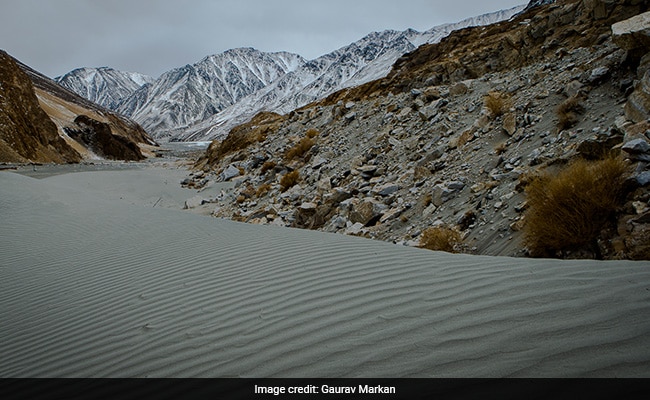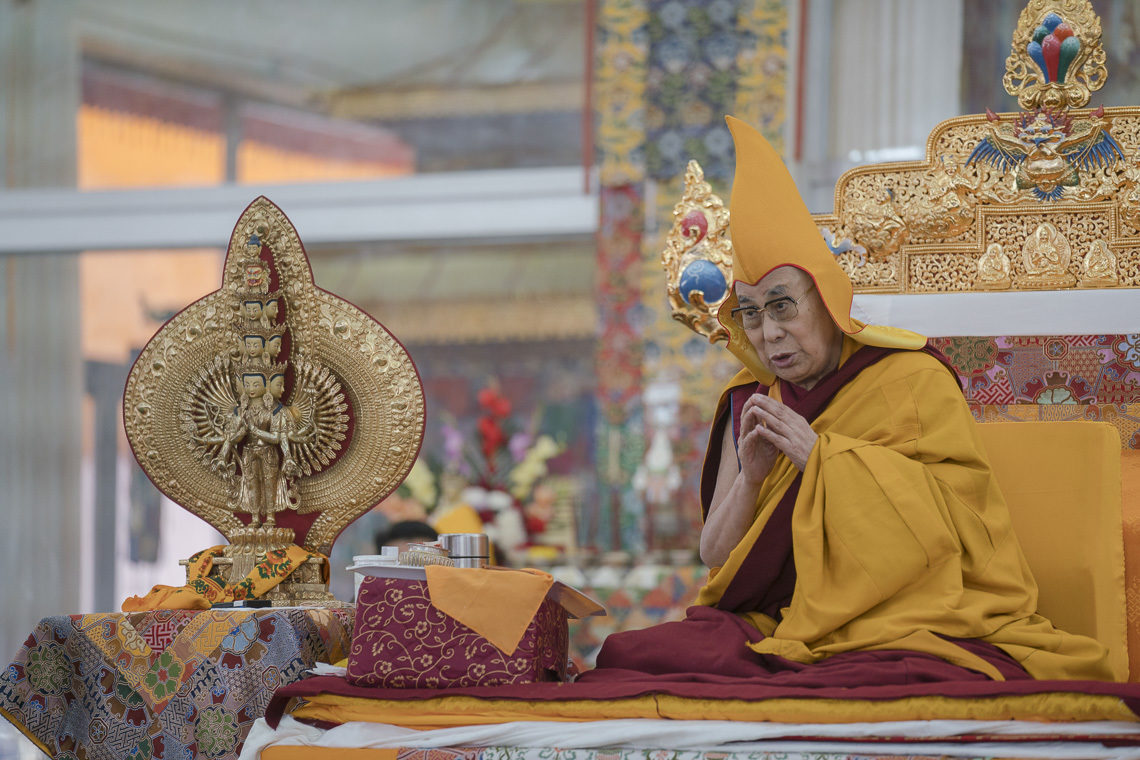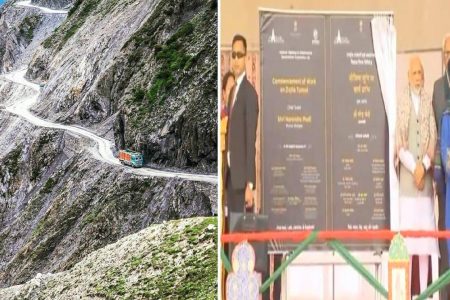
ARTS
Heritage Heroes: Preserving History on Roof of the World
As history crumbles in the face of modernization, art lovers from across the world try to preserve Ladakh’s cultural heritage.
| November 27, 2017
SHARE
TWEET
SHARE
SHARE
0 COMMENTS
The rugged moonscape of Ladakh seems untouched by time, and the only clue it offers to the passage of time is its centuries-old monasteries. Towering over each village like a sentient protector, these monasteries and their artefacts are a rich source of history of the region. Once central to the Silk Route before China and Pakistan closed the borders, the monasteries are victims of negligence and the forbidding climate of the Himalayan desert makes matters only worse.
Thangkas, murals, religious masks, texts, statues, weaponry and its very architecture — the treasure trove of art in monasteries– are in danger of being lost to the world. So much so, that the World Monument Fund has listed the region in the top 100 endangered sites in the world.
“Kashmir was where Vajrayana Buddhism was married to Saivite Hindu tradition,” Benoy K Behl, a filmmaker and photographer who has spent much of his time in Ladakh, tells Little India, talking about how the region was also a vital junction of the great trade routes that extended from Punjab to Tibet, Iran and Central Asia. It is, therefore, no wonder that the murals found in the monasteries see a wide set of influences: Turk-Mongol, Indo-Aryan, Iranian, Chinese.
The rampant change in climate has led to erratic rainfalls, landslides and flash floods, causing grave damage to the exteriors as well as the internal structure of the heritage buildings. Also, giving up old practices of construction, due to the pressures of modernization, have only added to the problem — these new practices are certainly not friends of heritage. Behl, who has spent decades studying the structures, and spearheading efforts to restore them, notes that going against the traditional methods and not adopting conservation-friendly technology led to most of the problems. Some of the major problems are that the concrete solution used in these buildings cracks owing to the weather, and using plastic sheets to cover murals dampen them.
THE MATHO MUSEUM PROJECT
Researcher and filmmaker Sangitika Nigam, who traveled with Behl across the land to identify monasteries in state of disrepair (56, by their count), has often emphasized that no restoration work can be done without the support of local people, resource and tradition.
Agrees Nelly Rieuf, a Himalayan art restorer who started the Matho Museum project in 2011 with the help of the monks from the Matho monastery, the local villagers and volunteers.

Nelly Rieuf
Sydney-born Rieuf has French roots and was initially trained by her aunt Marion Boyer who restored Thangkas — Tibetan Buddhist paintings made with natural pigments and materials — for over three decades. Rieuf received formal training in art restoration at Paris-Sorbonne University. She is supported by a dedicated team of volunteers — a motley crew of international and national students, climbers, architects, mountaineers — who help out with the project for a few months every year.
Rieuf was pointed in the direction of Matho by a monk, she tells Little India. “While I was in Mustang (Nepal), the son of the Sakya Trizin (the leader of the Sakya’s Buddhist school) informed me about the project in Matho Gompa in Ladakh,” she recalls. “The monks at Matho wanted to create a museum and asked me to implement their vision. Being a museum maker is a family tradition, it goes back to six generations in France and I’m the first one in my family doing it overseas!”
As there are only a few Thangka restorers in the world, Rieuf trained the local women of Ladakh on how to restore art. The women, now empowered by their new career, touch up masks, repair fraying Thangkas, and retouch statues and damaged wall murals. Each piece can take up to three months to be restored to a form that comes close to its original glory.

Oracle festival at Matho monastery
Matho Monastery, the only known monastery of Sakya sect of Buddhism in Ladakh, was founded in 1410. It is located about 20 km from Leh. The monastery is well-known for the Oracle festival, where two chosen monks act as conduit for divine spirits and guide villagers. The site is home to 600-year-old Thangka paintings and artefacts, like bronze sculptures, weapons, and intricately carved ritual chalices, beautiful jewelry and costumes.
MASJID SHARIF RESTORATION PROJECT
The Matho Museum, set to open in 2018, saw support from German architect Andre Alexander of Tibetan Heritage Fund until his demise in 2012. The Tibetan Heritage Fund was founded in 1996 by Alexander along with an artist, Pimpim de Azevedo. They started working in Ladakh in 2003.
One of their most notable restoration works was the Masjid Sharif restoration project, the first mosque in Leh. The mosque was built during the time of “Lion King” Senge Namgyal (1616-1642), a Buddhist king whose mother was a Muslim princess from the neighboring Baltistan. According to the restoration report by the organization, the Finnish embassy provided half the budget for the restoration.
Switzerland-based Achi Association has also been working in the region, concentrating their efforts in Kanji, Skurbuchan and Wanla areas of lower Ladakh, where they have been working with the local people on conservation and maintenance of chortens, paintings and monasteries.
Behl himself got support from scientists studying conservation technology in the region, Indian Army, as well as UNESCO, to restore two monasteries to their former glory — the Wanla monastery and Guru Lhakhang gompa (built between 11th to 13th century period) some years back. “I was happy to see that people were coming forward to help restore monasteries, and I went back to my main work of documenting Asian art, writing books, making films on the history of art and holding photographic exhibitions around the world,” he says.
Monasteries are an important documentation of trans-Himalayan Buddhism and Kashmiri Buddhism, Behl points out. Their very construction — on the hilltop (designed at a time when invasions were high) or on the valley floor — are key indicators of the time period they belong to. They are what remain of the time when the Buddhist king Yeshe-O (967-1040 C.E.) tried to fortify the kingdom by restoring Buddhist teachings. It was on his request that 32 Kashmiri artists were brought to Ladakh. Their distinctive signature art helped in establishing the 108 monasteries, from western Ladakh to Tawang in Arunachal Pradesh.
However, the region’s richest monastery and certainly the one that sees most tourist influx — Hemis — has refused to remove the “out of bounds” tag for the Archaeological Survey of India (ASI). The ASI, that had offered to take up conservation work here, has not been allowed to come in since 2006 after disagreement with the monks. Amid the standoff between the Buddhist clergy and the ASI, the heritage of the growing tourist spot suffers.
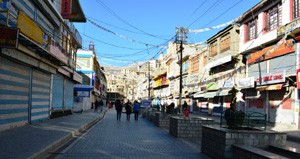



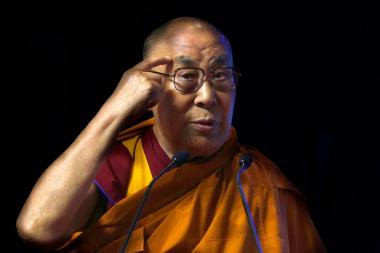 Kolkata: Tibet does not seek independence from China but wants greater development, Tibetan spiritual leader the Dalai Lama said here today.
Kolkata: Tibet does not seek independence from China but wants greater development, Tibetan spiritual leader the Dalai Lama said here today.

 Today's Paper ePaper | Kashmir Uzma | | Wednesday, November 22, 2017 LADAKH Security tightened at Leh airport The Leh airport, 340 kms from Srinagar, is being used both by the army and civilians and witness heavy rush of travellers during the day. GK Web Desk Srinagar | Posted : Nov 21 2017 2:19PM | Updated: Nov 21 2017 2:20PM Representational Pic Government forces were put on maximum alert in Leh town of frontier region of Ladakh in Jammu and Kashmir on Tuesday following intelligence reports that militants might strike the local airport there. The Leh airport, 340 kms from Srinagar, is being used both by the army and civilians and witness heavy rush of travellers during the day. Leaving nothing to chance, the security has been beefed up in and around the airport, official reports said. SponsoredHair Loss Problem? Get Solved by Ayurvedic Hair Oil. Made in Kerala. Buy Now ! TOP About Us Terms of use Copyright © Greaterkashmir.com. GK Communications Pvt. Ltd. All Rights Reserved Designed and developed by: 4cplus Today's PaperePaper | Kashmir Uzma | | Wednesday, November 22, 2017 LADAKH Security tightened at Leh airport The Leh airport, 340 kms from Srinagar, is being used both by the army and civilians and witness heavy rush of travellers during the day. GK Web Desk Srinagar | Posted : Nov 21 2017 2:19PM | Updated: Nov 21 2017 2:20PM Representational Pic Government forces were put on maximum alert in Leh town of frontier region of Ladakh in Jammu and Kashmir on Tuesday following intelligence reports that militants might strike the local airport there. The Leh airport, 340 kms from Srinagar, is being used both by the army and civilians and witness heavy rush of travellers during the day. Leaving nothing to chance, the security has been beefed up in and around the airport, official reports said.
Today's Paper ePaper | Kashmir Uzma | | Wednesday, November 22, 2017 LADAKH Security tightened at Leh airport The Leh airport, 340 kms from Srinagar, is being used both by the army and civilians and witness heavy rush of travellers during the day. GK Web Desk Srinagar | Posted : Nov 21 2017 2:19PM | Updated: Nov 21 2017 2:20PM Representational Pic Government forces were put on maximum alert in Leh town of frontier region of Ladakh in Jammu and Kashmir on Tuesday following intelligence reports that militants might strike the local airport there. The Leh airport, 340 kms from Srinagar, is being used both by the army and civilians and witness heavy rush of travellers during the day. Leaving nothing to chance, the security has been beefed up in and around the airport, official reports said. SponsoredHair Loss Problem? Get Solved by Ayurvedic Hair Oil. Made in Kerala. Buy Now ! TOP About Us Terms of use Copyright © Greaterkashmir.com. GK Communications Pvt. Ltd. All Rights Reserved Designed and developed by: 4cplus Today's PaperePaper | Kashmir Uzma | | Wednesday, November 22, 2017 LADAKH Security tightened at Leh airport The Leh airport, 340 kms from Srinagar, is being used both by the army and civilians and witness heavy rush of travellers during the day. GK Web Desk Srinagar | Posted : Nov 21 2017 2:19PM | Updated: Nov 21 2017 2:20PM Representational Pic Government forces were put on maximum alert in Leh town of frontier region of Ladakh in Jammu and Kashmir on Tuesday following intelligence reports that militants might strike the local airport there. The Leh airport, 340 kms from Srinagar, is being used both by the army and civilians and witness heavy rush of travellers during the day. Leaving nothing to chance, the security has been beefed up in and around the airport, official reports said. 




